From an hour of mourning and silence to 35 years of processions. How the Chernobyl Way began
The Chernobyl Way in Belarus has a 35-year history. For the first time, the procession, timed to coincide with the anniversary of the Chernobyl disaster, took place on April 26, 1989. At first, it was organized to oppose the communist government, which hid the truth about the events, and to honor the memory of the victims. When Lukashenka came to power, the procession became a protest against his rule. Since then, the Chernobyl Way has always been a reason for repression from the authorities.
The first memorial event took place in Minsk back in the days of the USSR, the next one took place in independent Belarus in 1996. The first was the mourning of silence, the second was the cry of action. The first attracted the attention of the authorities as well, although it was not subjected to severe repression, the second became the largest in its history: about 50 thousand people took part in it, many of whom were persecuted. Today we recall how the Chernobyl Way began in Belarus with these two events, which became another reason for the authorities to repress the people.
1989
On April 26, 1989, the first mass action titled Hour of Sorrow and Silence dedicated to the consequences of the Chernobyl disaster took place in Minsk. Thousands of people from different Belarusian cities gathered in the central square of the capital that day for a silent rally.
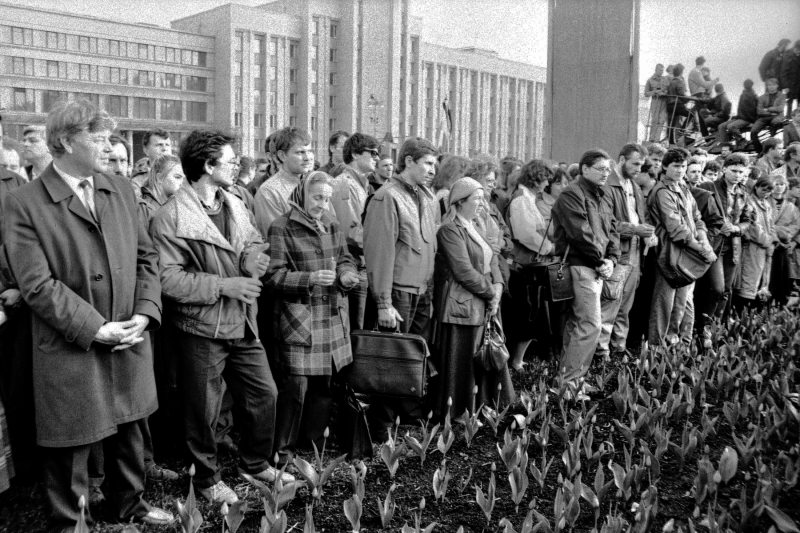
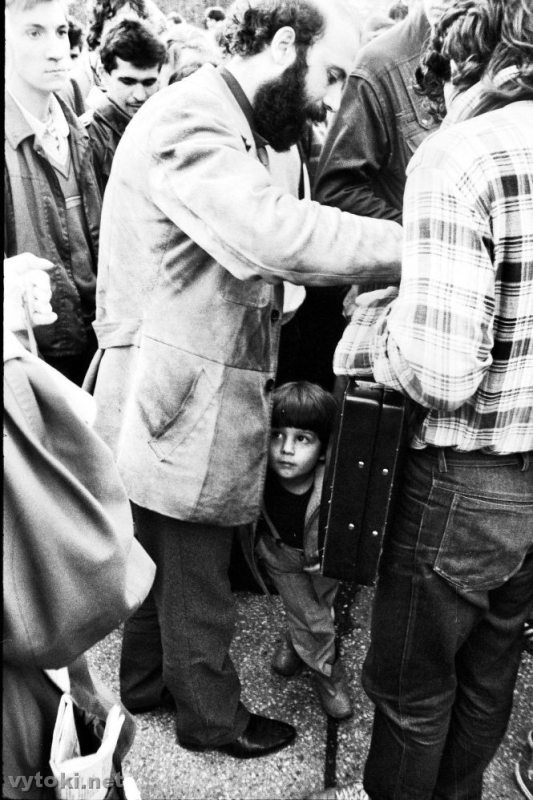
On that day, the prophetic words of writer Ales Adamovich were heard on Lenin Square (now Independence Square):
"Chernobyl is connected not only with big lies, but also with direct crimes, official crimes. And of course, we will all come to an environmental Nuremberg. This is inevitable in our country."
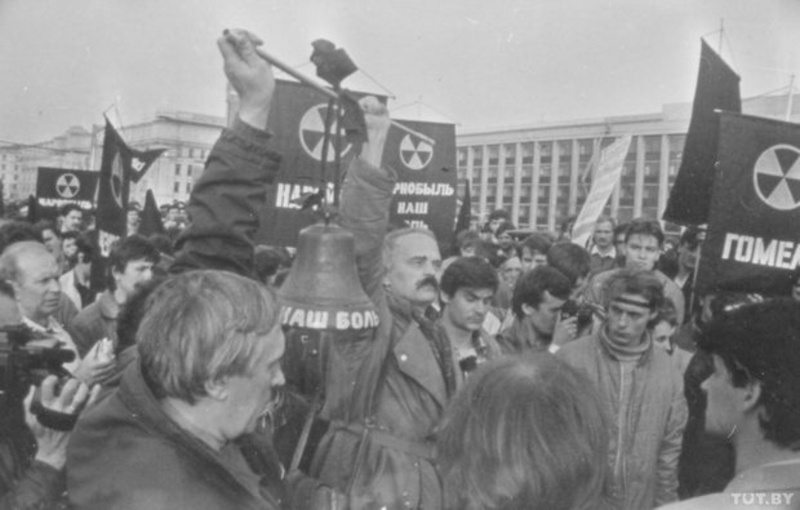
In 2020, the human rights center Viasna and the Center for Civil Society Studies of Belarus presented a video exhibition of photographer Uladzimir Sapahou, dedicated to the rally. The exhibition was presented by the participants of those historical events that were reflected in historical photographs. The photos provided an opportunity to travel back in time and get to September 30, 1989, when the first Chernobyl Way march was held in Minsk, dedicated to the consequences of the Chernobyl nuclear power plant disaster. Then the head of Viasna Ales Bialiatski noted the special relevance of this topic on the eve of the launch of the Belarusian nuclear power plant in Astravets, scheduled for early July:
"We dedicate this exhibition to the opening of the Belarusian nuclear power plant in Astravets, as a warning about the terrible danger that we will have to live next to."
Six months after the silent action, the first Chernobyl Way took place in Minsk; it took place on September 30, 1989. This was the first time that an action dedicated to the consequences of the Chernobyl disaster was held as a march (procession). According to the words of Siarhei Naumchyk:
"In 1989, there were two protests dedicated to the Chernobyl tragedy. In April, the Hour of Sorrow and Silence. And the autumn one was the most powerful. The Central Committee did not want to allow it to happen. There was a propaganda campaign, and then they tried Khadyka and Hrushavy and tried to detain Pazniak.”
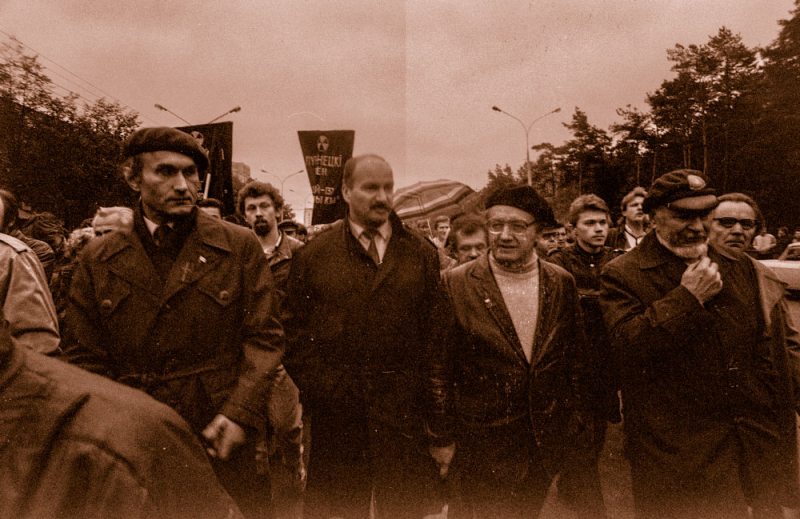
- Chernobyl Way, Minsk, September 30, 1989. Photo of Uladzimir Sapahou.
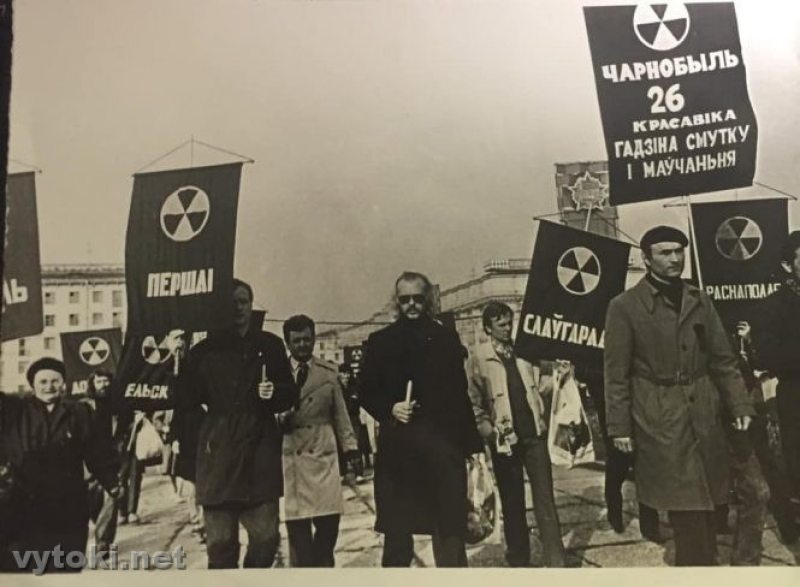
- In the photo: Zianon Pazniak, Mikola Kupava, Henadz Sakalou-Kubai, Siarhei Androsau, and Aleh Bembel. The author of the photo: Kastus Voitka.
A third of the participants came from the exclusion zone and held signs with the names of settlements in their hands. The Communist authorities did not allow the demonstration; moreover, a nationwide clean-up day was scheduled for the same date. Nevertheless, about 30 thousand people marched from the watch factory near Čaliuskincaŭ Park to the present day Independence Square. The organizers of the first rally received heavy fines.
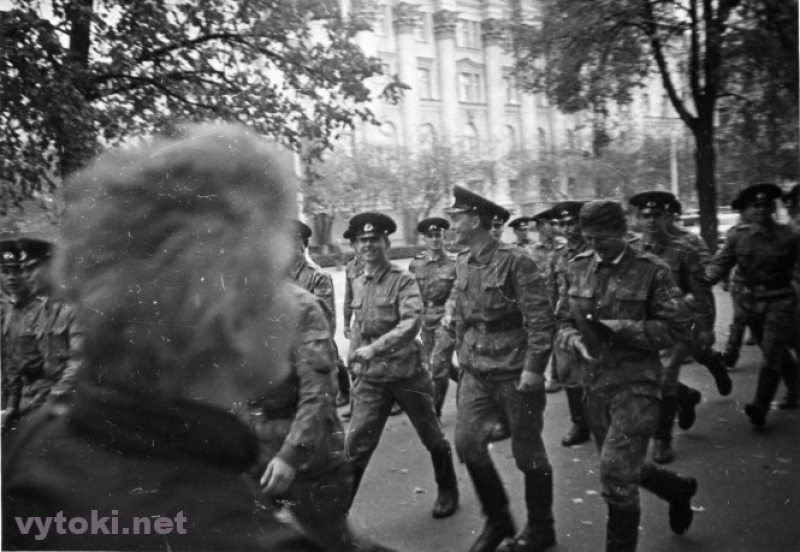
Ales Bialiatski also has a badge of the participant of the first Chernobyl Way, which took place on September 30, 1989 in Minsk.
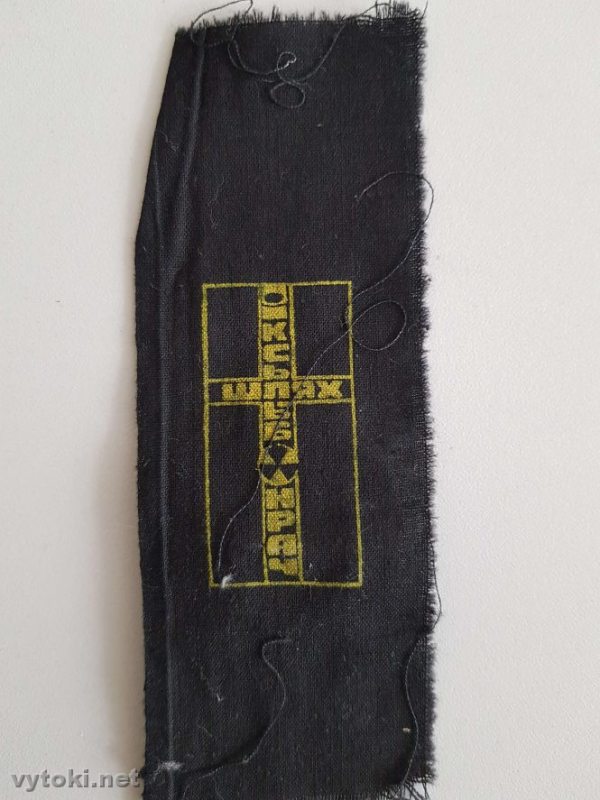
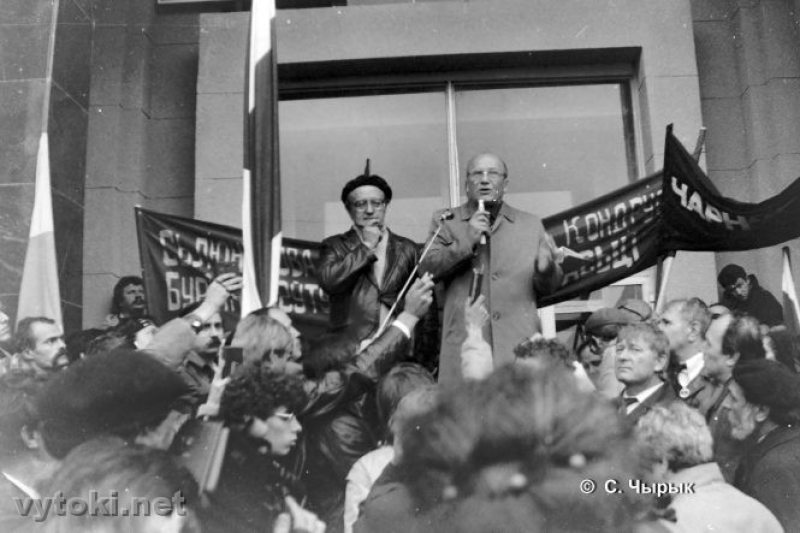
- Writer Ales Adamovich and corresponding member of the Academy of Sciences Yauhen Piatrayeu are speaking. The author of the photo: Siarhei Chyryk.
1996
The Chernobyl Way in 1996 became the largest in history: about 50 thousand people took part in it. It became the most intense point of the Minsk Spring-96: a series of street actions that took place that spring to resist the integration with Russia. This is how the chairman of the human rights center Viasna Ales Bialiatski recalls this event in his book The 20th Spring:
"In the spring of 1996, Lukashenka decided to give battle to street democracy. And if the actions on March 15 (Constitution Day), March 24 (Freedom Day), and April 2 (protest demonstration against the Union Treaty) were relatively calm, then on April 26, the police received permission for violence at the Chernobyl Way.
The Chernobyl Way again was a protest against the alliance with Russia. A huge number of people gathered on Yakub Kolas Square. Forty or fifty thousand. Someone burned the Russian flag first. White-red-white flags were flying over the crowd, and there were many banners and decorations related to Chernobyl. And when the people moved along Francysk Skaryna Avenue towards Victory Square, the avenue was blocked by cars, and the police used batons.
A real fight broke out. People with bare hands fought off the policemen and overturned two police cars. Initially, it was planned to hold a rally on Independence Square, but when we reached the circus, before the intersection of Skaryna Avenue with Kupala Street, behind it, a little higher, the avenue was blocked by a crowd of policemen in helmets and with shields. Leading people on them meant a bloodbath. So the demonstrators turned down Kupala Street towards Niamiha. Zianon Pazniak stood on the sidewalk with his wife and greeted the demonstrators. In the process, brutal fights with the police unfolded behind the Svislač Bridge, on a hill. The demonstration reached, as on April 2, the Sports Palace, where a rally was held.
For me, this police attack on peaceful demonstrators was a shock. Since 1988, from the day of the dispersal of Dziady in November, the police avoided using brutal violence against demonstrators... And after seven years of a moratorium on violence, it begun. The psychological barrier that had kept the security forces from violence all those years was broken."
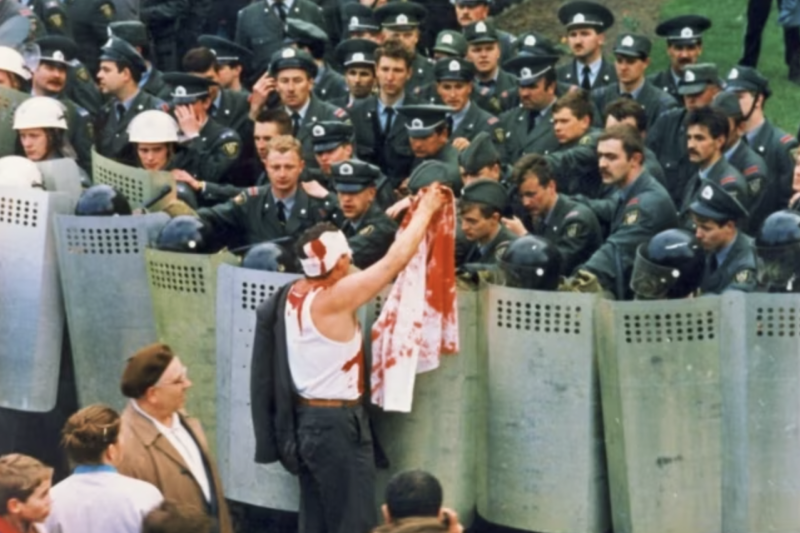
It was after the Chernobyl Way in 1996 that the first mass arrests of activists and journalists took place. After the action, the BPF leader Zianon Pazniak left the country, and Ales Bialiatski founded Viasna.
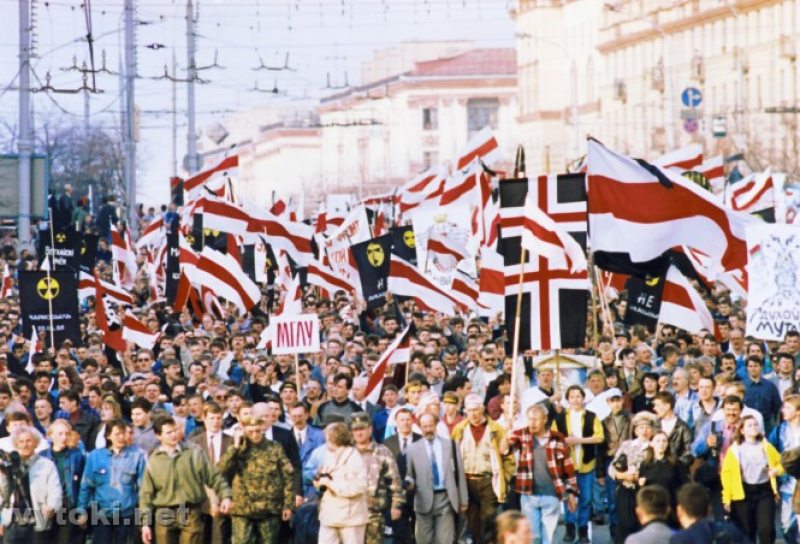
"Having been defeated in clashes with demonstrators, riot police and special forces decided to take revenge on random people. In particular, a riot police squad attacked the youth that gathers every evening near the Philharmonic Hall. They put everyone on the ground with batons, and then, stuffing more than 30 guys into a barred van, they took them to different police departments, where they put them in cells. They were kept behind bars all night and half of the next day, not even allowing them to call their parents. These 15–21-year-old boys are now charged with participation in "riots". (Svaboda newspaper, April 30, 1996).
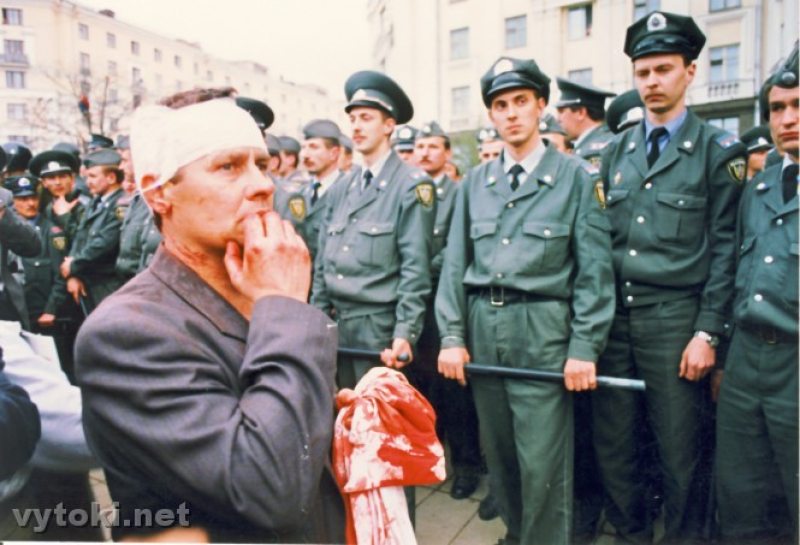
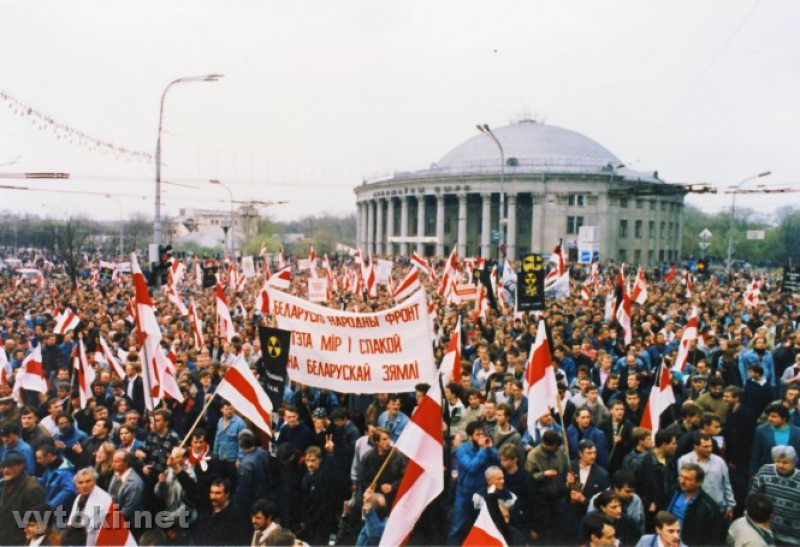
The Chernobyl Way in 1996 was on a Friday. On Monday, April 29, Aliaksandr Lukashenka seriously criticized the actions of the security forces to disperse the protest. The newspaper Svaboda wrote that "Lukashenka was outraged that the "hefty hulks" failed to give hell to the "screaming youths" and said that if the law enforcement agencies continue to "liberalize", then the opposition's protests will never end. The chairman of the KGB, Uladzimir Matskevich, and the Deputy Minister of Internal Affairs were blamed for the fact that their subordinates could not detain Zianon Pazniak (on the day of the action, almost all the leader of the BPF were detained). But the Prosecutor General Vasil Kapitan was criticized most of all because the prosecutor's office subordinate to him did not show activity in initiating cases against the "main defenders". Among the "defenders", in addition to the leadership of the BPF, deputies Henadz Karpenka, Stanislau Shushkevich, Aliaksandr Dabravolski, and Pavel Znavets were named. The Minister of Justice Sukala received an order to prepare documents for the prohibition of the Popular Front, wrote tut.by.
The article uses archival materials from the website vytoki.net.

















